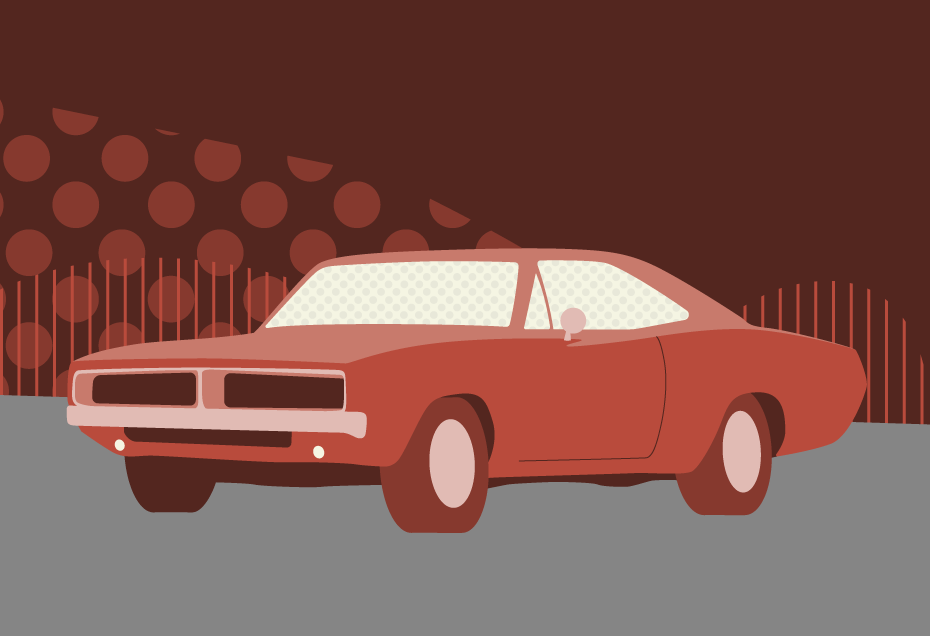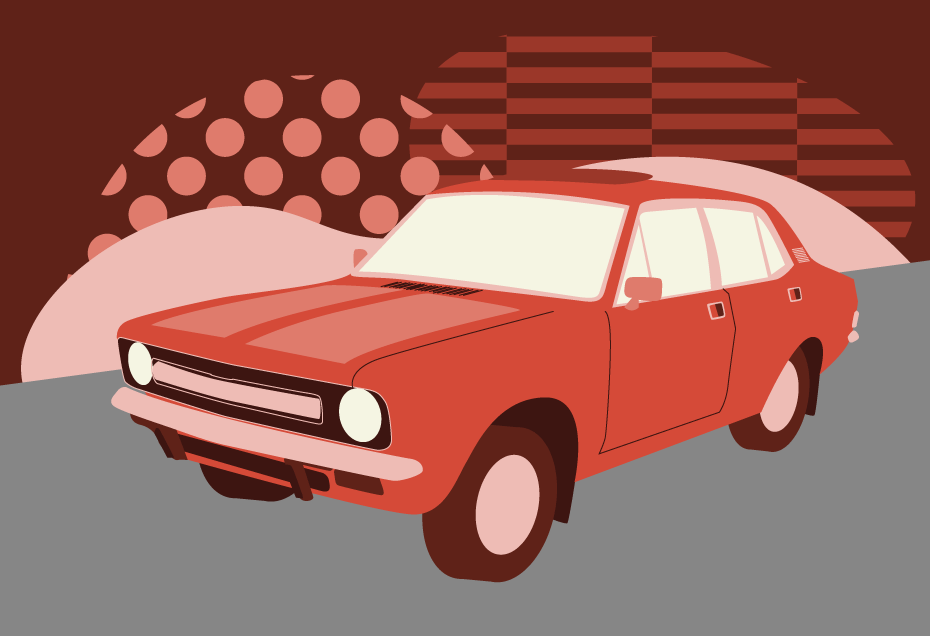To those of a certain age, the Dodge Charger conjures images of The Dukes of Hazzard’s General Lee, or Steve McQueen’s Mustang hunting down a Charger-driving hitman in Bullitt.
From the mid-70s, however, the Charger morphed first into a personal luxury car, then a sub-compact hatch, and finally today’s grand touring sedan.
But it’s the glory years from 1966 to 1974, when the Charger was one of America’s finest muscle cars, that we look back on.
In the mid ‘60s, with the Ford Mustang taking charge of the nascent ‘pony car’ market, Dodge was in danger of getting left behind – and they knew it.
It wasn’t just Ford either: Chevrolet’s Chevelle and the Pontiac GTO had stolen a march in showrooms, and on race tracks and drag strips with their ‘intermediate muscle cars’, a step up from the pony class.
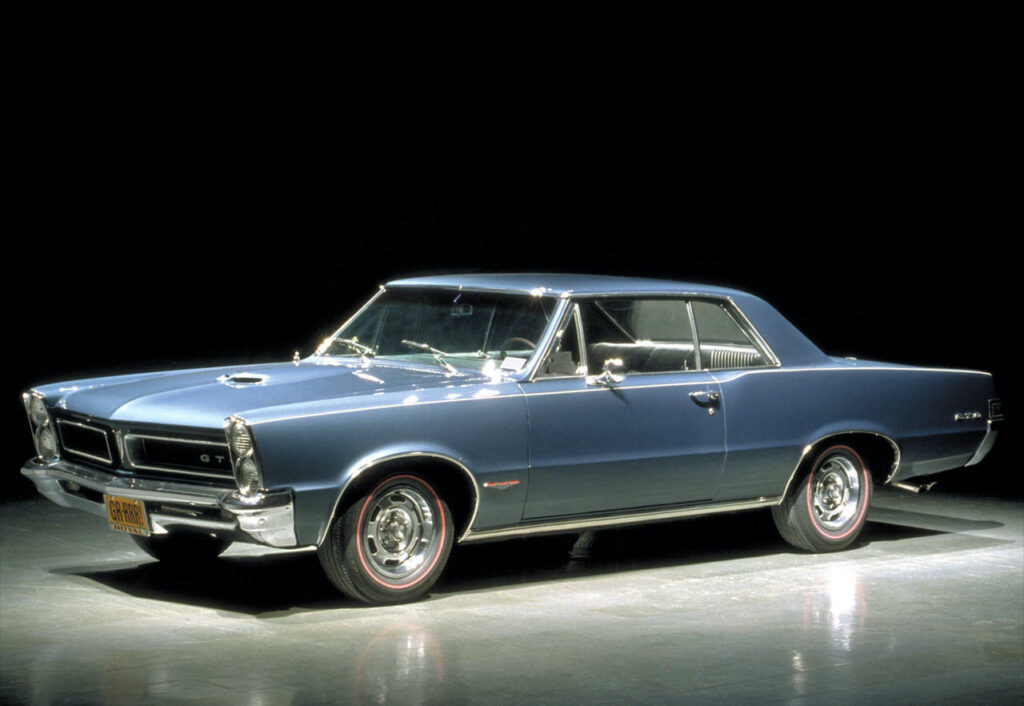
In the Chrysler stable, the Plymouth Barracuda was fighting the fight, and Dodge dealers made it clear they wanted something similar from their Michigan bosses.
Chrysler president Lynn Townsend was desperate to avoid cannibalising Plymouth sales, but told Dodge’s chief engineer, Burton Bouwkamp, to give dealers the specialist the car they wanted – as long as it wasn’t a Barracuda derivative.
He gave them the Dodge Charger.
Dodge Charger development
The Charger name first appeared on a dramatic 1964 concept based on a rebodied Dodge Polara.
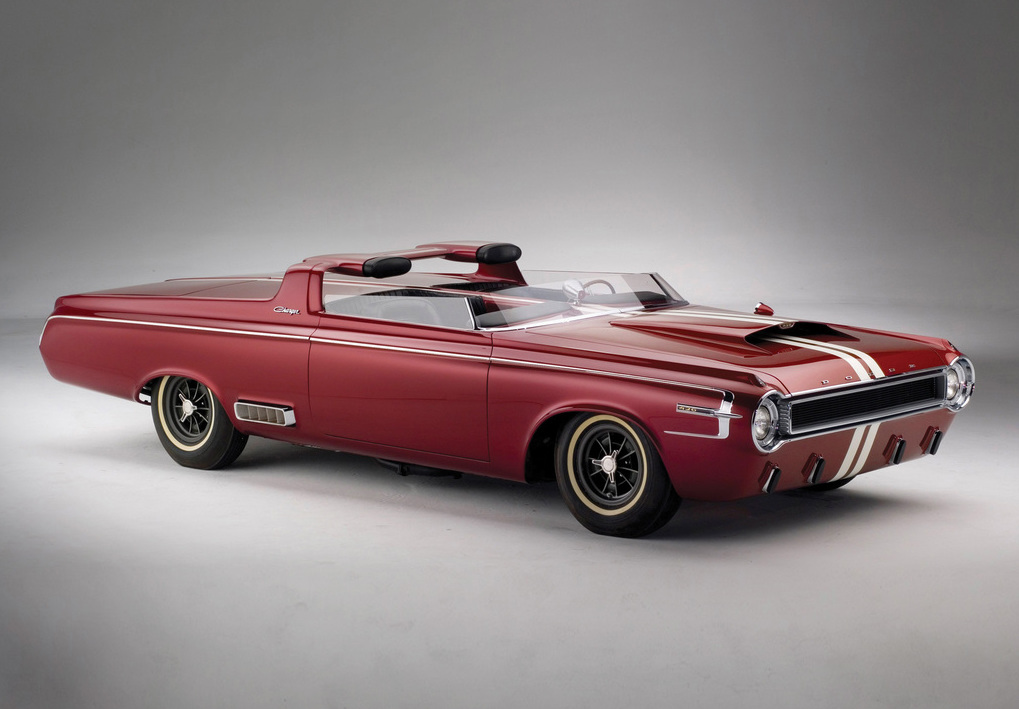
Intended to showcase the upcoming 426-cubic inch ‘Hemi’ V8, the Charger was a sleek, two-seater roadster with a custom interior.
Despite wearing ‘426’ badges, it never did feature the new engine as it toured showrooms, the unit destined for the show car redirected to the Chrysler-backed racing team.
It was very different to the next Charger unveiled the following year as an ‘idea car’ intended to stimulate market interest in the concept.
In reality, it was far more than a concept, the Charger shown to the media and car show attendees was the approved design, with only minor changes to the production model.
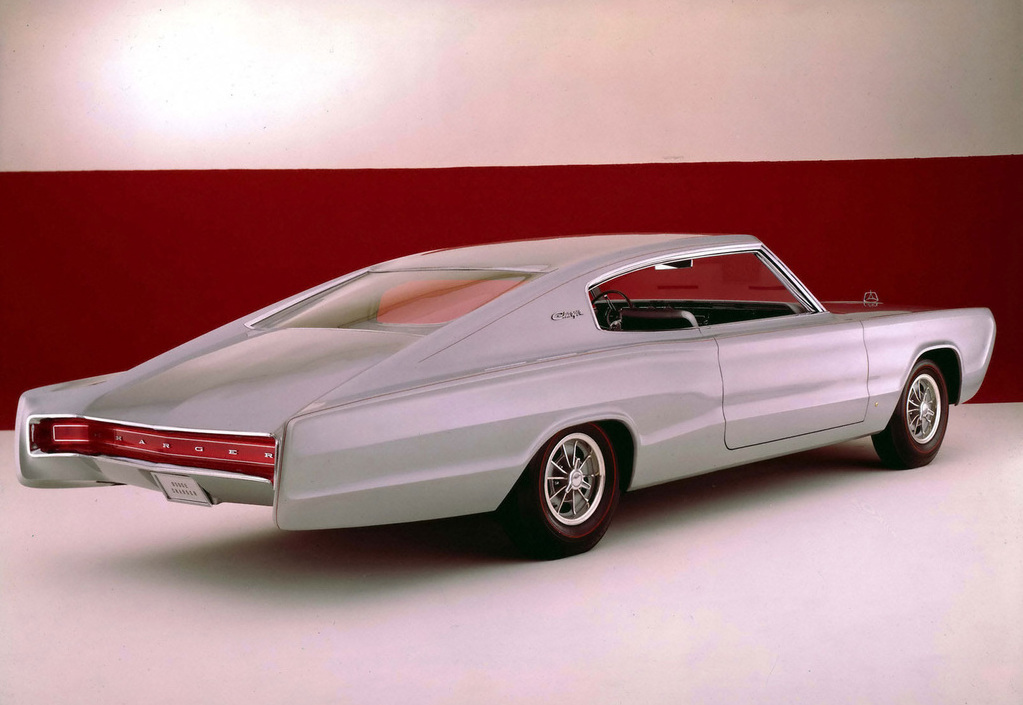
Based on the B-Body platform and sharing a chassis with the mid-sized Coronet, the Charger had already been slated for a mid-year launch in 1966.
A more conventional fastback design with a long bonnet to house the largest Chrysler engines, the car featured a full-length centre console and four bucket seats.
The first Dodge Charger
The newest muscle car was first shown on January 1, 1966, at the college Rose Bowl American football game, introduced as the ‘Leader of the Dodge Rebellion’.
Changes to the ‘concept’ included hideaway lights and a convex chrome grille, while the rear end was a little less steeply-raked than the concept. However, the full-width lights and Charger lettering remained.
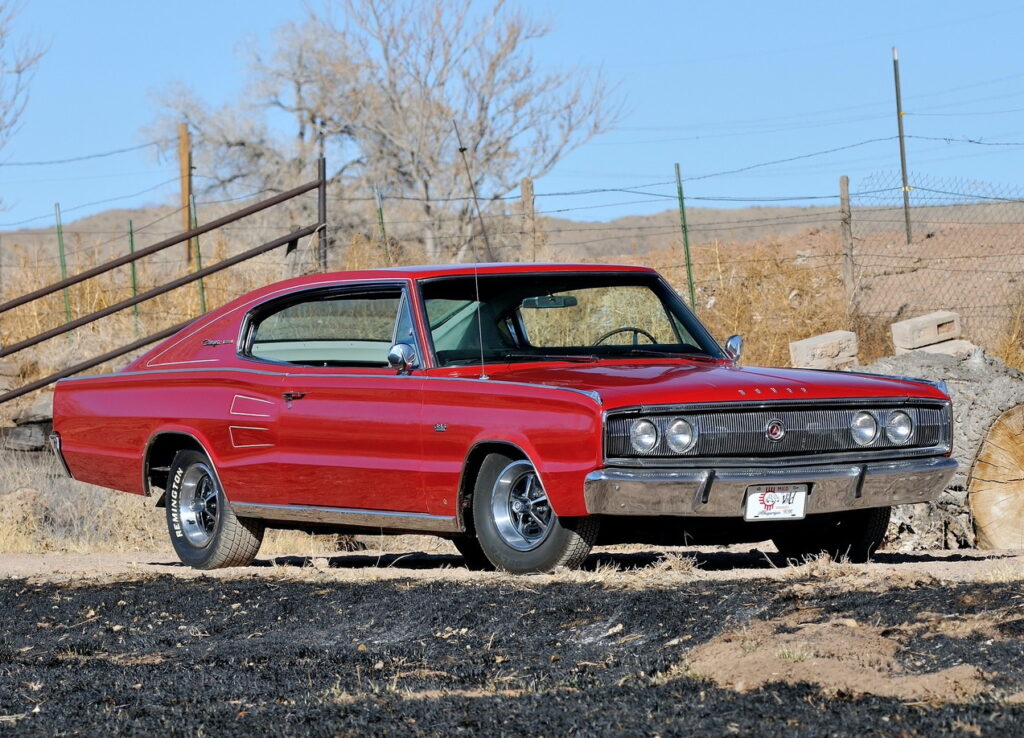
The new Dodge presented an aggressive visage to go with its undoubted power.
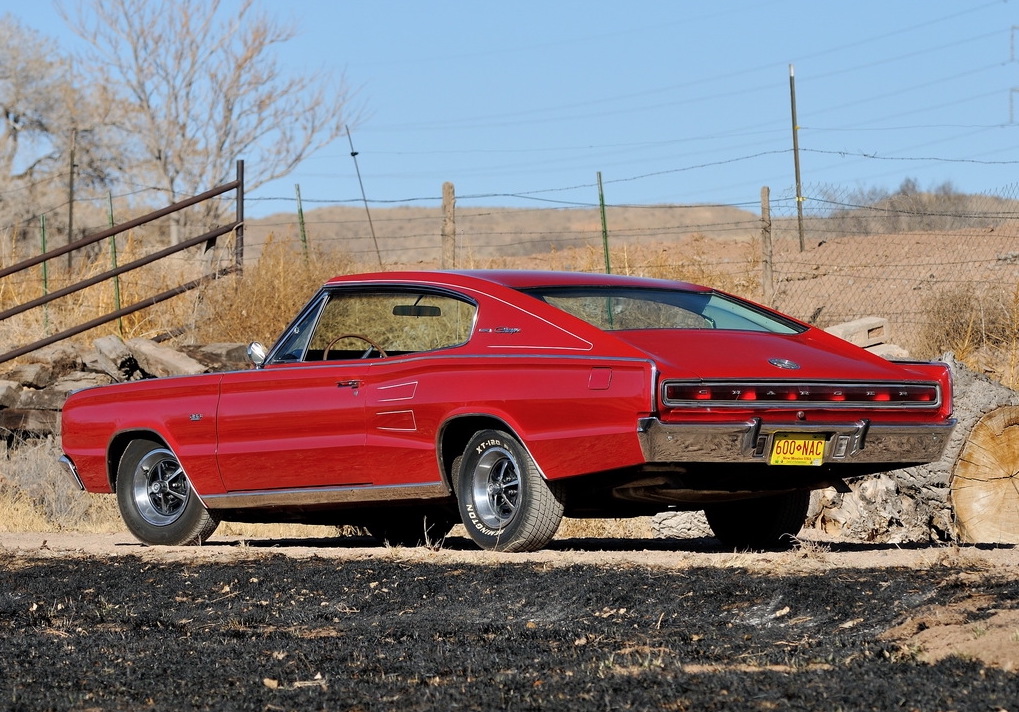
For among a range of V8s on offer was a new street version of Chrysler’s 426 cu in (7-litre) ‘Hemi’, producing 425bhp and 490 lb ft of torque.
It was, however, an expensive option, and fewer than 500 first-year cars out of more than 37,000 were fitted with the most potent engine.
More modest power was offered by either 318 cu in (5.2-litre), 361 cu in (5.9l) or 383 cu in (6.3l) V8s.
Customers could choose optional three-speed Torque-Flight automatic, four-speed auto, or the standard four-speed manual transmission.
Inside, the Dodge featured a futuristic dashboard, with four round instrument pods lit through high-voltage electroluminescence, giving the driver the impression of piloting a spaceship.
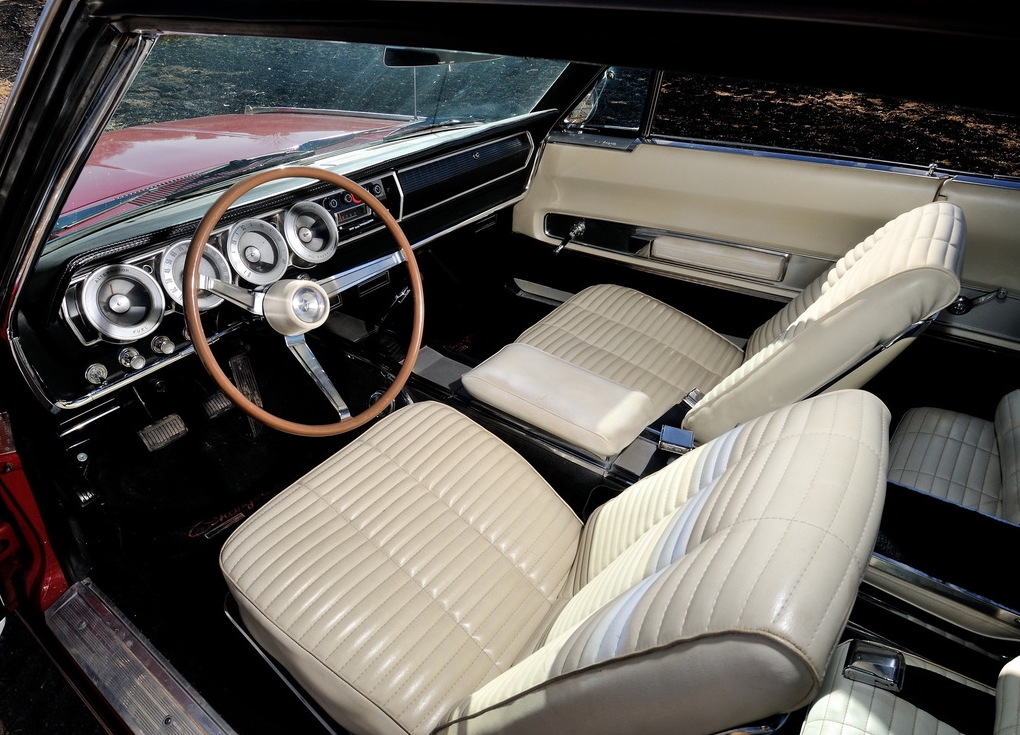
The bucket rear seats folded flat to allow for plenty of storage under the fastback, making the Charger a reasonably practical load carrier.
Testing the Charger in February ‘66, Car and Driver magazine was taken by the “gutsy sounding” name, happy that it broke Detroit trends of naming cars after animals…
The car drove like the ”jazzed-up Coronet” it was, but “that should not be interpreted as a drawback” as the Coronet was a well-engineered car.
“But we had somehow expected more when we first got behind the wheel,” the magazine wrote. “Maybe it’s because the sporty styling conjured up the fantasy of all sorts of exotic engineering underneath.”
Of course, it would have been a different matter if the test car had been fitted with the ‘Hemi’ – “the very mention of which makes bold men pause to wonder” – and not the comparatively “bland” 383 unit.
Like our illustration of the Dodge Charger: the muscle car years at the beginning of the article?
Download a free high-quality poster version here.
Charger takes to NASCAR
The Charger was expected to bear the burden of Dodge’s NASCAR fortunes for 1966 but, despite its slippery shape, things didn’t work out early on.
Its body generated so much lift at the rear on the faster tracks, including Daytona, that drivers reported a loss of control so severe it was like ‘driving on ice’.
To aid downforce, Dodge added a small spoiler to the rear boot lid, allowed by NASCAR because the company made it a dealer-installed option.
It stabilised the car above speeds of 150mph and made the car competitive, Sam McQuagg winning the Firecracker 400 on July 4, 1966 in the first spoiler-equipped Charger.
Demands drop in 1967
There were minimal changes for 1967, limited externally to fender-mounted turn signals and an optional vinyl roof.
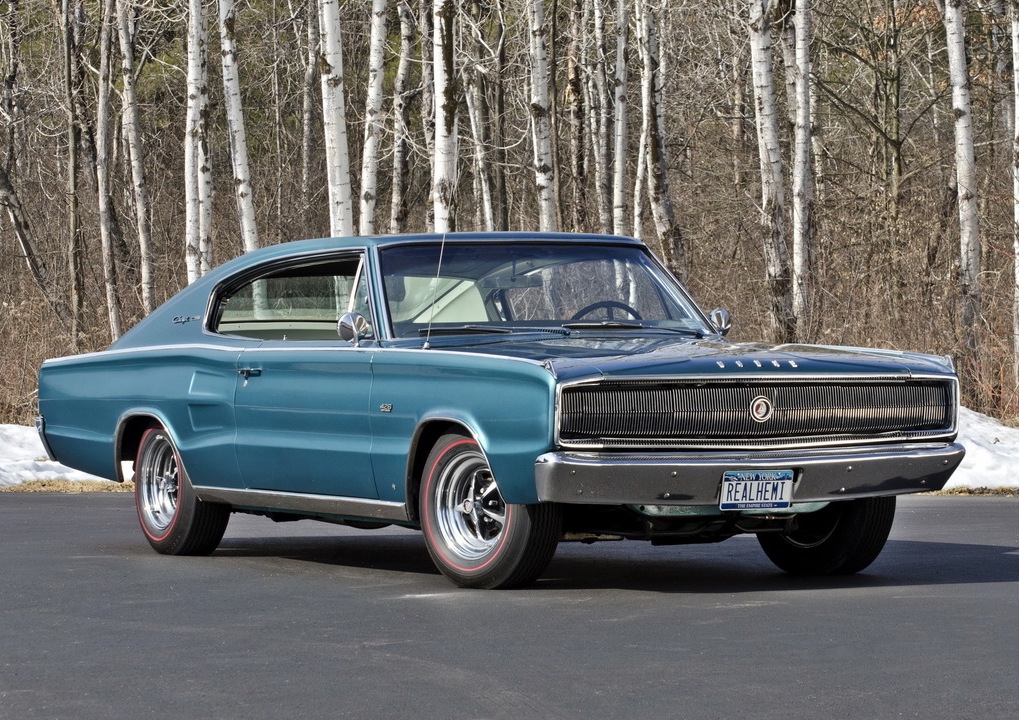
Inside, while the rear bucket seats remained, the centre console was removed following complaints about the difficulty of getting in and out of the back seats.
An extra passenger could be accommodated up front on a fold-out seat if the customer opted for a column gearshift.
However, just 15,788 units were sold in ‘67, less than half the number that were shifted in the car’s impressive first year.
Of those, just 118 carried the 426 ‘Hemi’ engine, which Motor Trend magazine described in a contemporary report: “The sound of the 425hp Hemi when fired up is unmistakable; it gives goose pimples to enthusiasts and fits to the competition. It isn’t really loud, just powerful and authoritative. Only the Shelby GT 350 and 500 offer a comparable sound.”
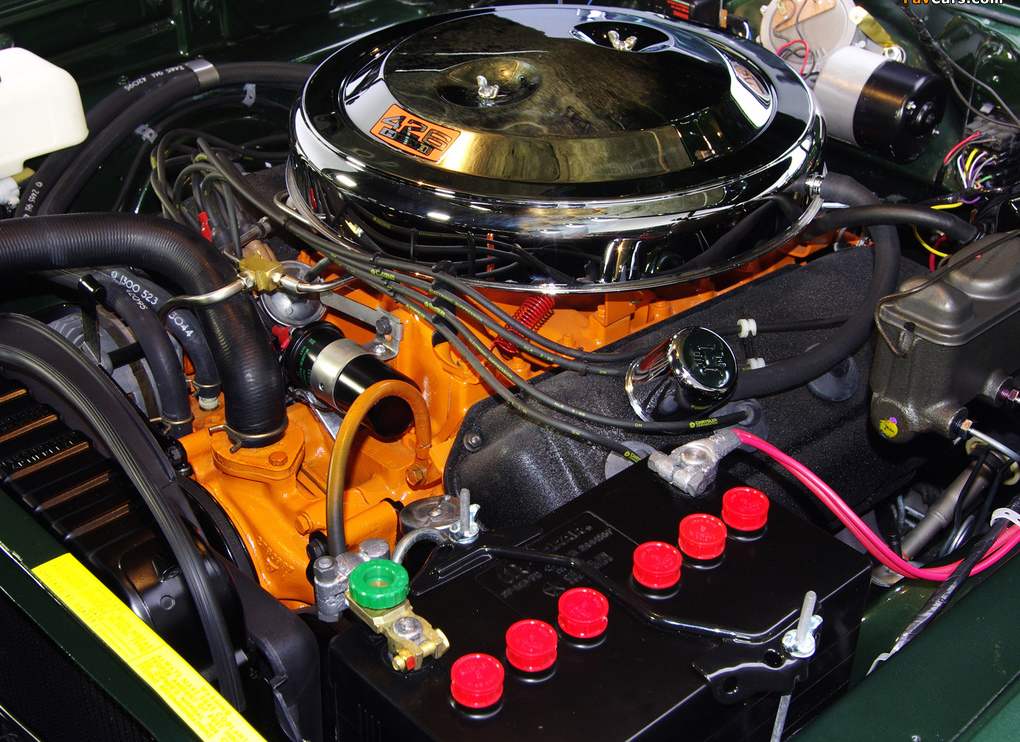
Dodge clearly needed to move in a different direction for the 1968 model year, and what they came up with would go down in muscle car folklore.
The ultimate Charger?
Ask someone to think of a ‘Dodge Charger’, and what will probably come to mind is the second generation, ‘Coke bottle’ shaped car made famous in the film Bullitt.
According to Bouwkamp, design chief Bill Brownlie wanted another fastback, but this would have cost $25 per car that the engineer wanted to spend elsewhere.
The compromise was a regular saloon with flying buttresses to provide a visually sloping rear end, while at the front the hidden headlamps remained (though now vacuum operated) behind a deeper set, more aggressive grille.
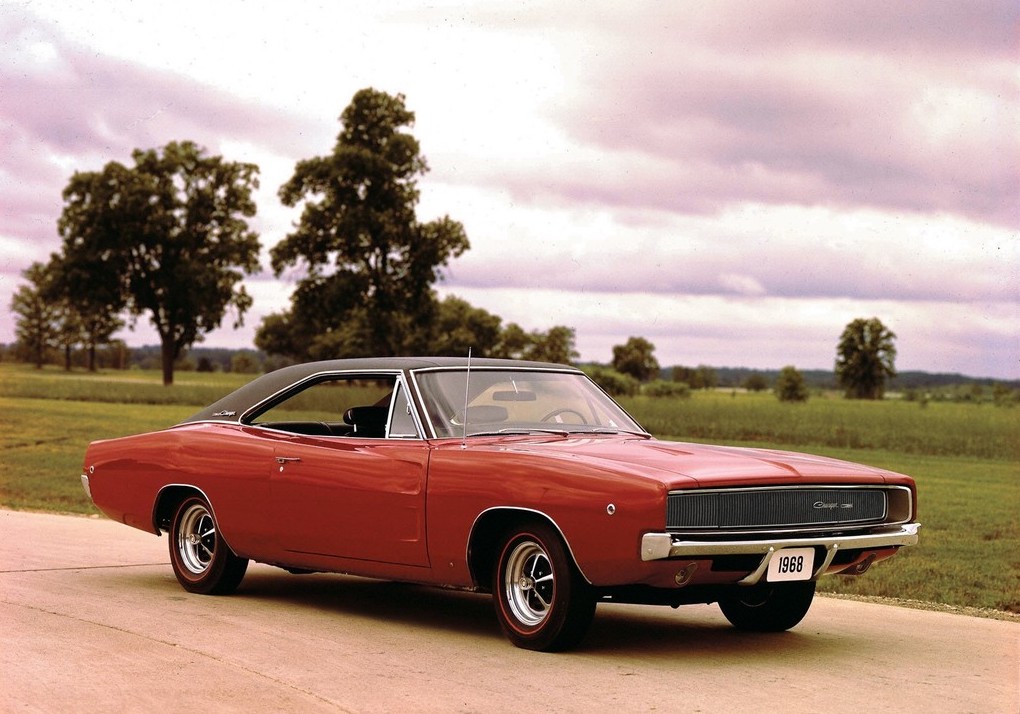
The full length rear tail light was out, in favour of two round units, while the rear bucket seats were replaced by a more simple bench.
First shown to the media in June 1967, Bouwkamp immediately knew Dodge was on to a winner with the ‘68 Charger.
“They went crazy over it,” he said. “We had to enforce the time that Motor Trend, Car and Driver, Popular Mechanics, and Hot Rod were scheduled for driving evaluations and pictures.”
Engines ranged from the 225 cu in slant six to the 440 cu in ‘Magnum’ V8 found in the new R/T performance model offering 375bhp and 480lb ft of torque – the car in which hitmen chased Steve McQueen’s Mustang in Bullitt.
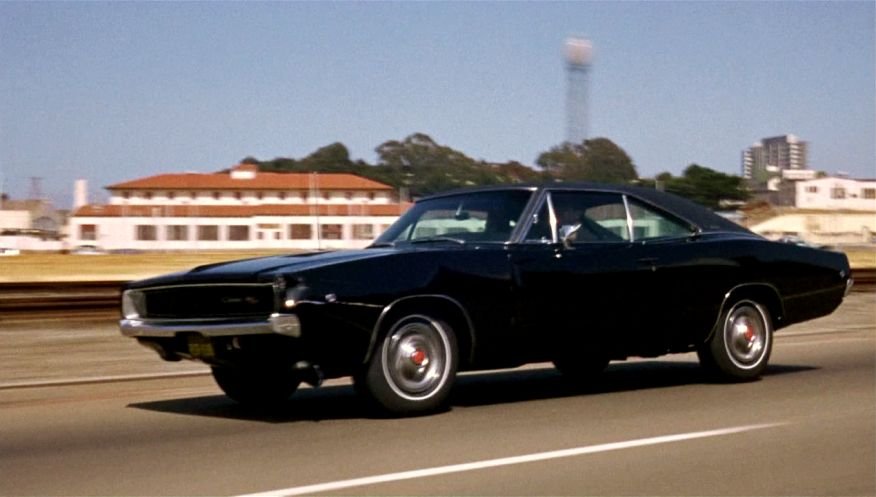
With the R/T, you got upgraded suspension, dual tail-pipes, and distinctive body stripes. You could still have the more powerful ‘Hemi’, but it was much more expensive.
The new Charger was a roaring success, with more than 96,000 cars sold in 1968.
Motoring journalist Jonny Smith has owned his ‘68 Charger – a rare 383 cu in with a four-on-the-floor Hurst manual transmission – since May 2008, and considers it the “pinnacle of muscle car design”.
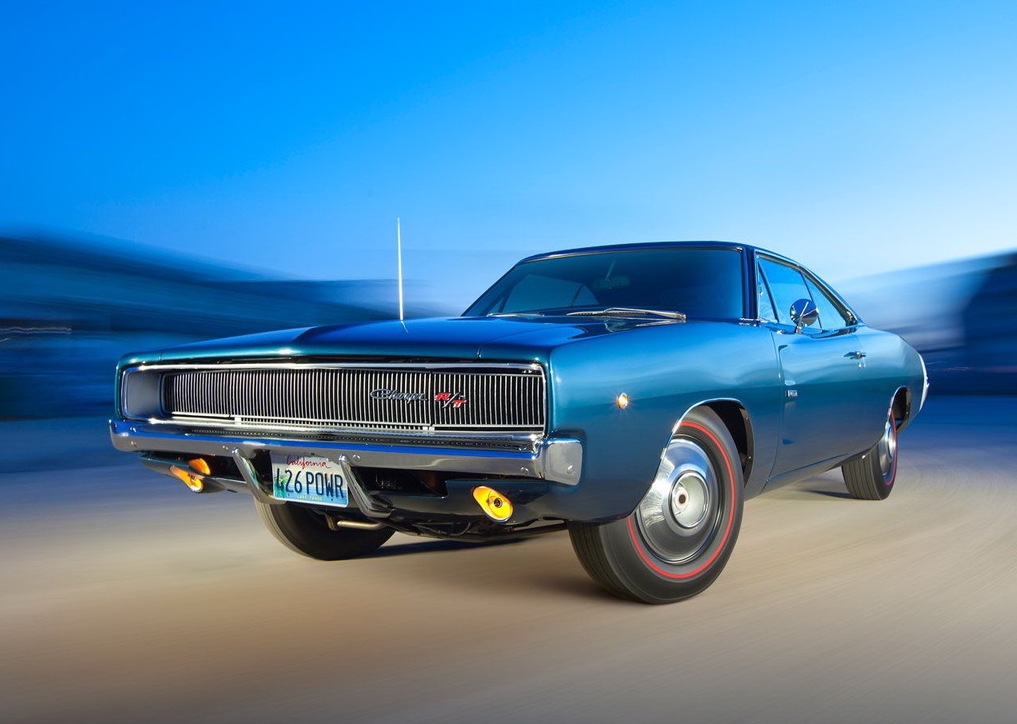
“It makes a Mustang look like an Italian man with plucked eyebrows,” he told Evo magazine. “The Charger may have the obligatory Coke-bottle haunches and a ‘Boar grain’ vinyl roof, but it’s nasty, menacing.”
Jonny’s car has non-servo drum brakes, no power steering, no air con, no radio, no sound-proofing and a 2ft gear shifter.
It’s “real bare-bones stuff”, he wrote. “It felt like I was buying some kind of retired moonshine runner’s wheels.
“I bought my Charger to charge about in and savour the most basic V8 driving experience.”
Charging into 1969
So successful was the ‘68 Charger that only minor changes were made for the following year, most notably a split front grille, redesigned headlights, and wider tail lights.
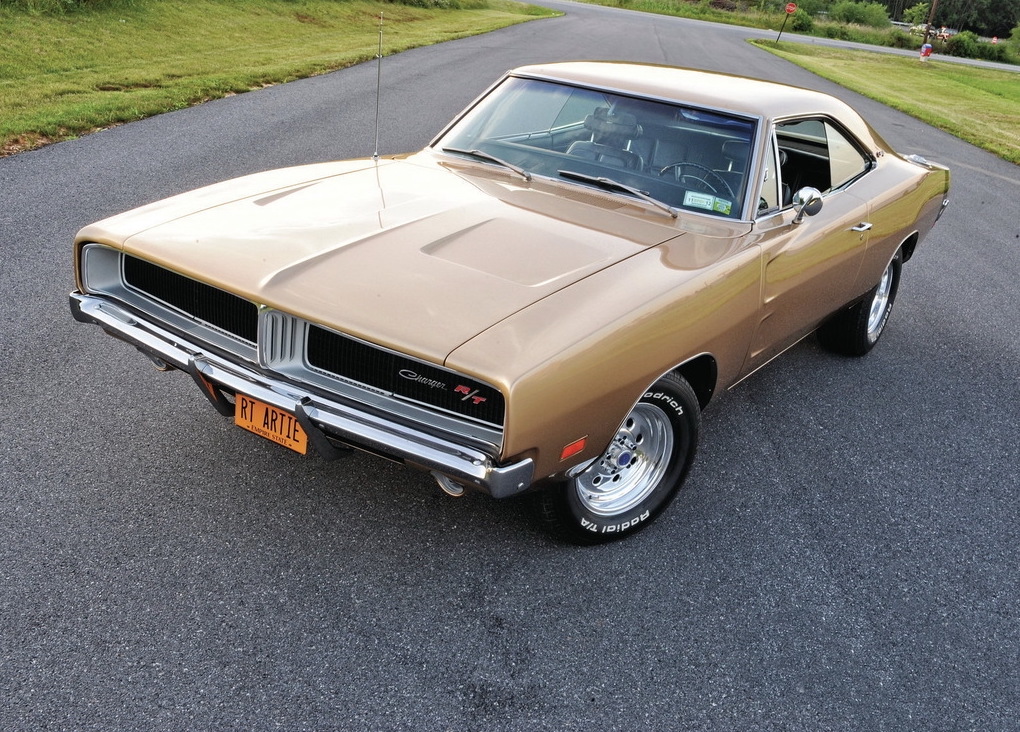
The ‘69 Charger would gain fame as the bright orange General Lee in the Dukes of Hazzard TV show aired from 1979, with its now infamous Confederate flag-painted roof.
After an underwhelming NASCAR season in 1968, largely because of the car’s deep grille inducing drag and its tunnelled rear window causing lift, Dodge introduced the Charger 500 in ‘69.
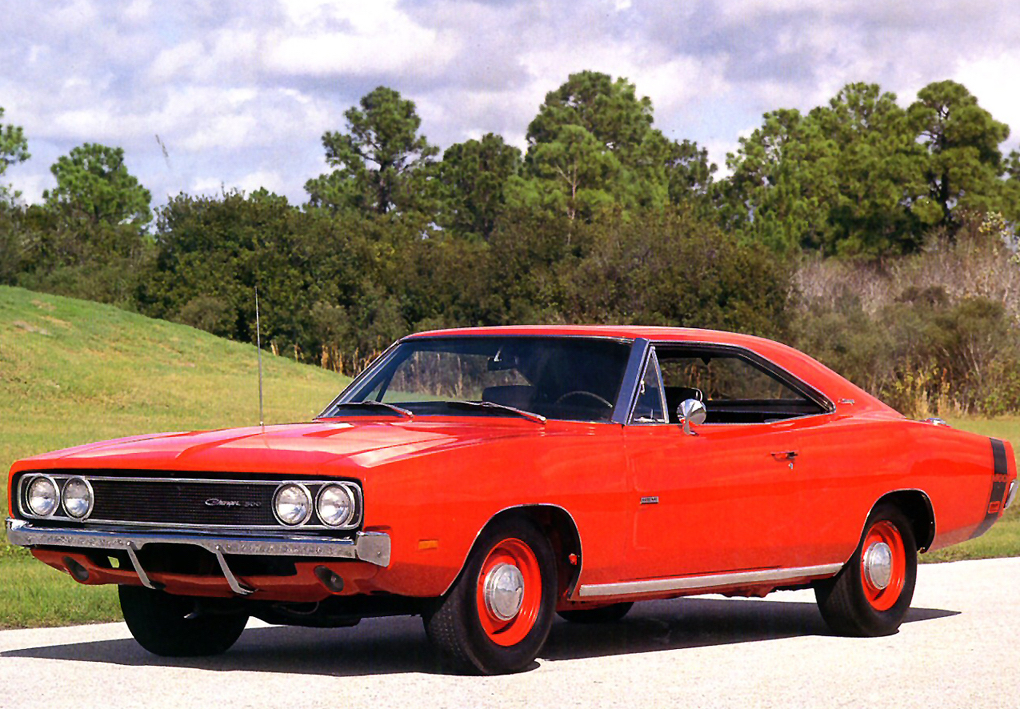
A flush grille from the Coronet and a standard rear window helped the car’s aerodynamics, but not to the extent that the car became truly competitive.
On the road, the 500 (named because 500 were made) came as standard with the 440 Magnum engine, and otherwise was similarly equipped to the R/T (which now also came in R/T SE form).
In the end, only 392 500s were made, 26 of which were fitted with the 426 ‘Hemi’ engine.
Dodge clearly needed to do more to make a real impact in motor racing…
Enter the Charger Daytona
The muscle car wars on the racetrack were hotting up as the 1960s came to an end, and Dodge took full advantage of NASCAR rules allowing body modifications to aid aerodynamics.
As a result, the ‘Winged Warrior’ Charger Daytona was born, featuring an extravagant, 23-inch tall rear spoiler and a new, wedge-shaped nose cone, and a ‘window cap’ to cover the recessed rear window.
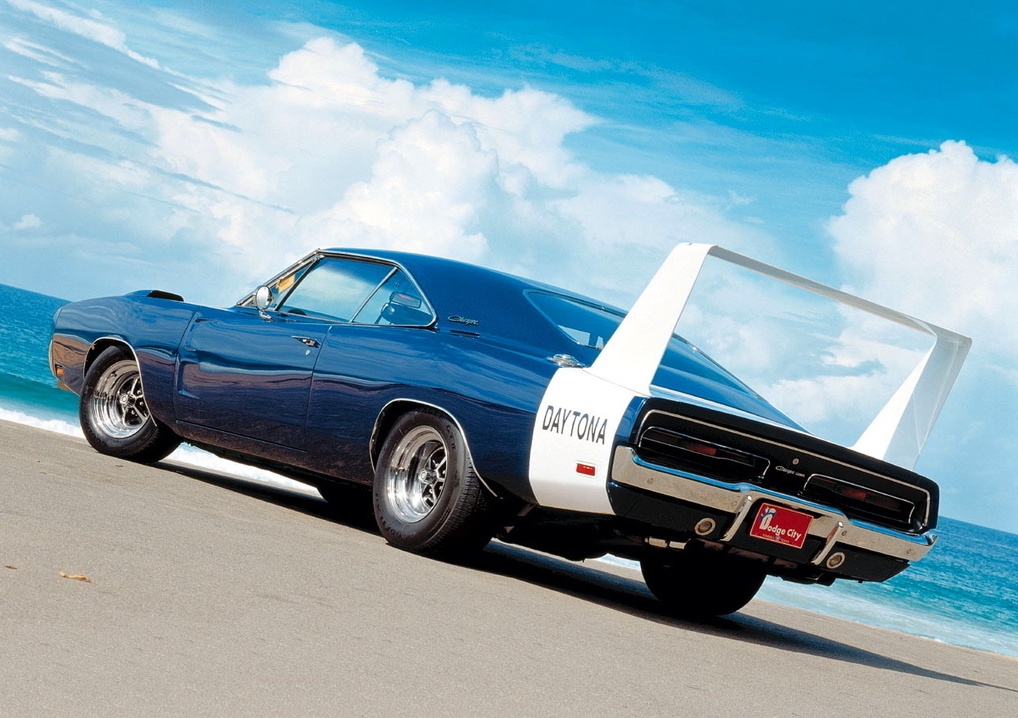
Along with the similarly equipped Plymouth Superbird, Chrysler’s aero cars dominated NASCAR in ‘69 and ‘70.
The Daytona won its first race, against a field weakened by a driver boycott, in the inaugural Talladega 500, and became the first NASCAR to top 200mph.
Dodge produced 503 homologation road cars, which were basically retrofitted Charger 500s, equipped with either the 440 Magnum (433) or 426 Hemi engines (70).
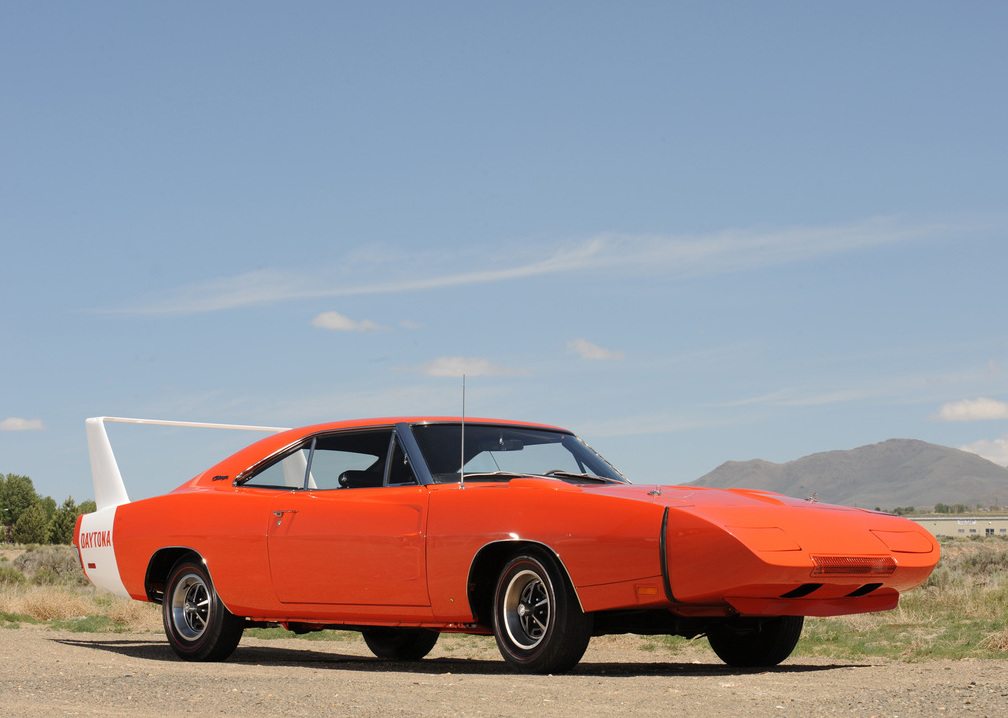
The Dayton won a further five races across two years, with its Superbird stablemate winning eight races the following year.
So dominant were the Chryslers that NASCAR first restricted their engine output, eventually banning all aero cars by the end of 1970.
High Impact and a new model
For the 1970 model year Charger, the last of the now legendary mark II, Dodge introduced High Impact paint colours along with a few cosmetic external changes including a new chrome grille.
Colours such as ‘Top Banana’, ‘Panther Pink’ and ‘Go-Mango’ are now highly sought after by Mopar enthusiasts.
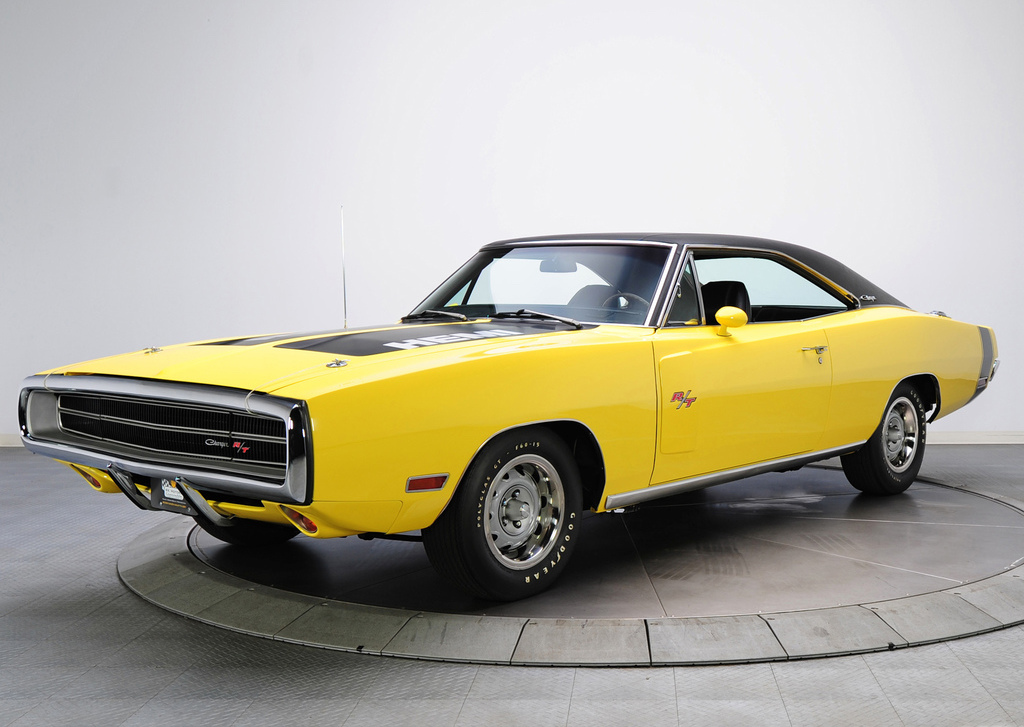
There was a new option under the bonnet, Chrysler’s 440 cu in Six Pack V8, providing 390hp and 490lb ft of torque.
With increased competition in the muscle car market, including Dodge’s own Challenger pony car, and hikes in insurance rates, Charger production fell to 46,576.
There was a new Charger for 1971, with all-new sheet metal, a semi-swept roofline and a new split grille, with Chrysler merging the car with the Coronet.
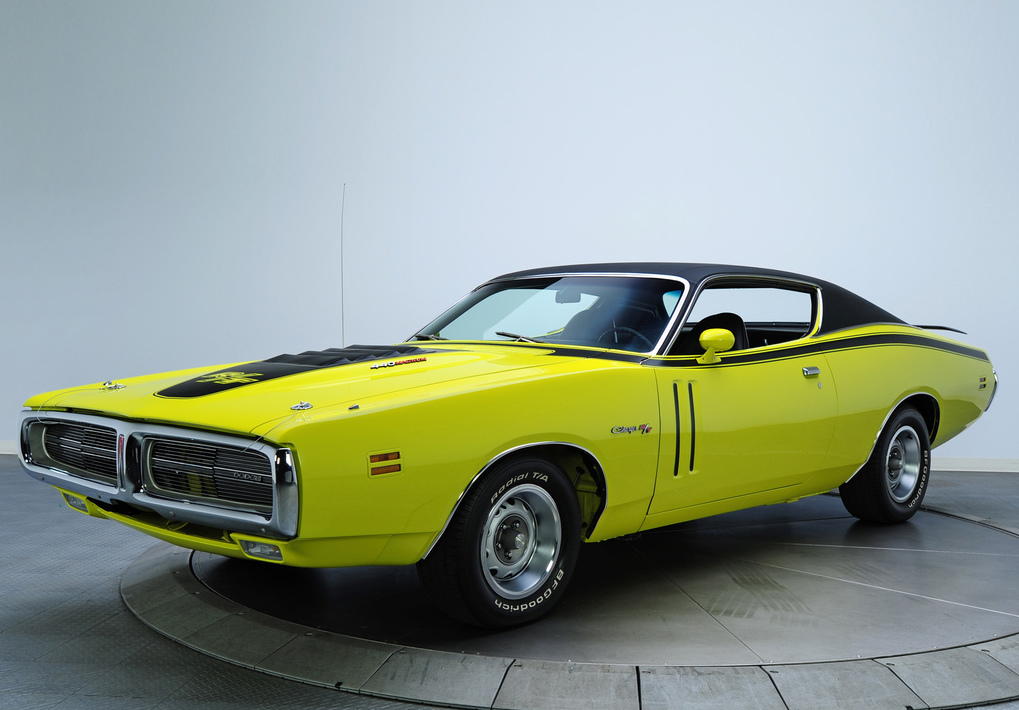
All B-body two doors were Chargers; all four doors were Coronets.
Although the ‘Hemi’ engine was still available, only 63 out of 2,722 R/T models were fitted with the most powerful engine, largely because of fuel and insurance costs. The ‘71 Charger R/T was the last production car to carry the legendary unit, with the 440 Six Pack also bowing out.
Another reason for slow R/T sales was the introduction of the Super Bee, previously a Coronet two-door model but now switched to the Charger.
A low-cost performance model, undercutting the R/T by $500, the Super Bee had striking graphics and a 440 engine as standard.
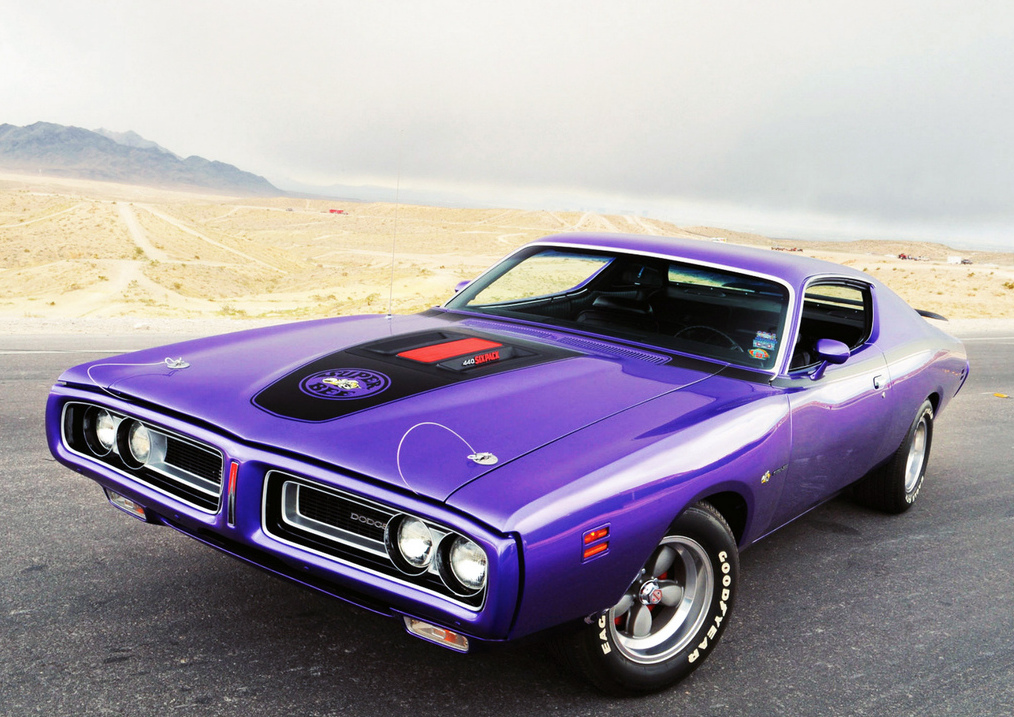
With 5,000 leaving showrooms, it comfortably outsold the R/T.
In 1972, a Rallye version replaced the R/T, but emissions regulations were beginning to bite and the muscle car sector was in trouble.
End of an era
The end of the muscle car era was in sight by 1973, when the Charger became slightly taller, wider, and longer (partly as a result of new, federally-mandated 5 mph bumpers).
Styling moved with the more extravagant ‘70s times, as the SE model gained a new ‘triple opera window’ surrounded by a canopy-style vinyl roof.
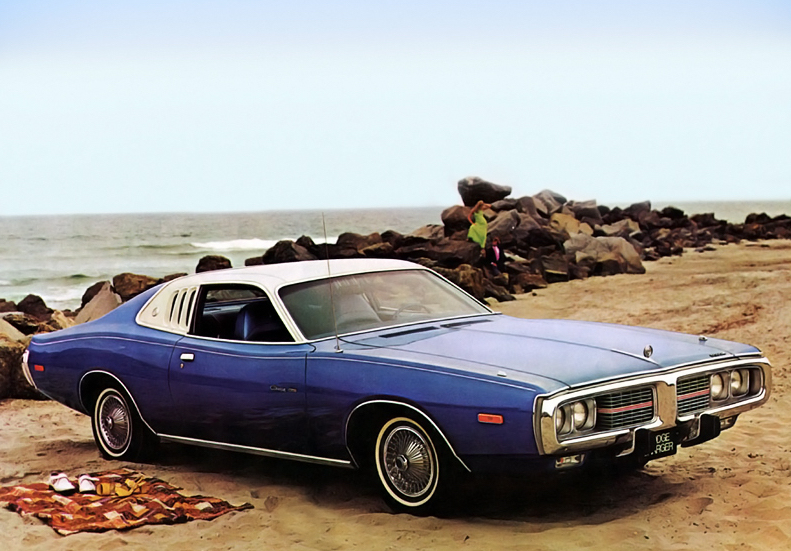
Performance engines were still available, but more than 60 per cent of the 108,000 cars sold in ‘73 were lower-powered versions, pointing the way to the car’s future as a ‘personal luxury car’.
This market-wide trend continued into 1974, with more buyers opting for luxury over performance, sounding the death knell for the muscle car.
The fourth-generation Charger, launched in 1975, completed the job, a new luxury car sharing a platform with the Chrysler Cordoba with performance barely considered.
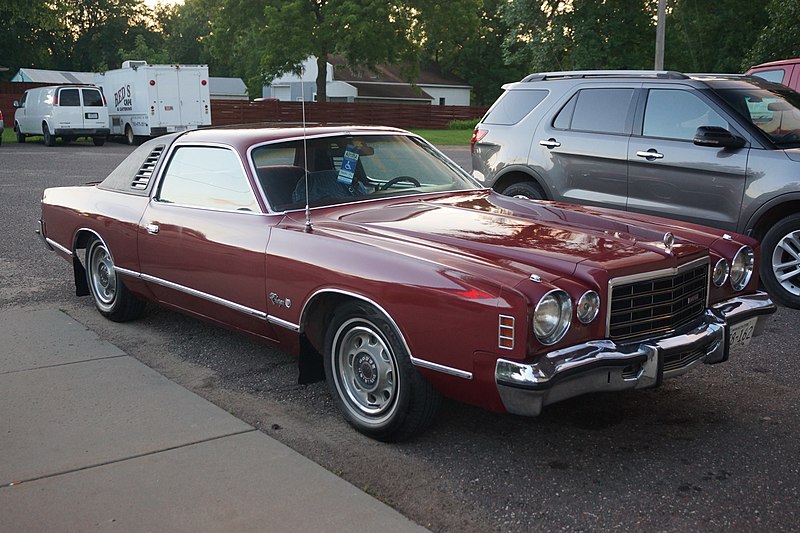
Although sales started reasonably, at 30,000, by 1978 they had dropped to just 2,725.
The glory years were well and truly over; a legend laid to rest.


